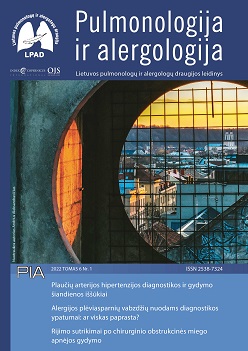NEWS ABOUT EOSINOPHIL: THEIR SUBTYPES AND EFFECTS ON THE RESPIRATORY NERVOUS SYSTEM
Abstract
The classification of eosinophil subtypes raises more and more questions. Eosinophils with different functions are identified, whose morphology and biological properties depend on the microenvironment and the state of the organism. Assessing the aspects that identified eosinophil subtypes are found in the blood raises the question of whether it is an eosinophil endotypes that maturate in the bone marrow through different mechanisms, determined by the “context” of the disease; whether these subtypes develop in the tissue under the influence of the local disease “context” affected microenvironment. Also, the lung parenchymal nervous system assessment reveals a marked increase in the number of resident eosinophils interacting with neurons. The influence of eosinophils on the process of airway innervation and hyperreactivity is rarely discussed. Inhibitors of muscarinic receptors secreted by eosinophils and their effect on sensory nerve sensitization are one of the main causes of airway hyperresponsiveness in type 2 asthma.


